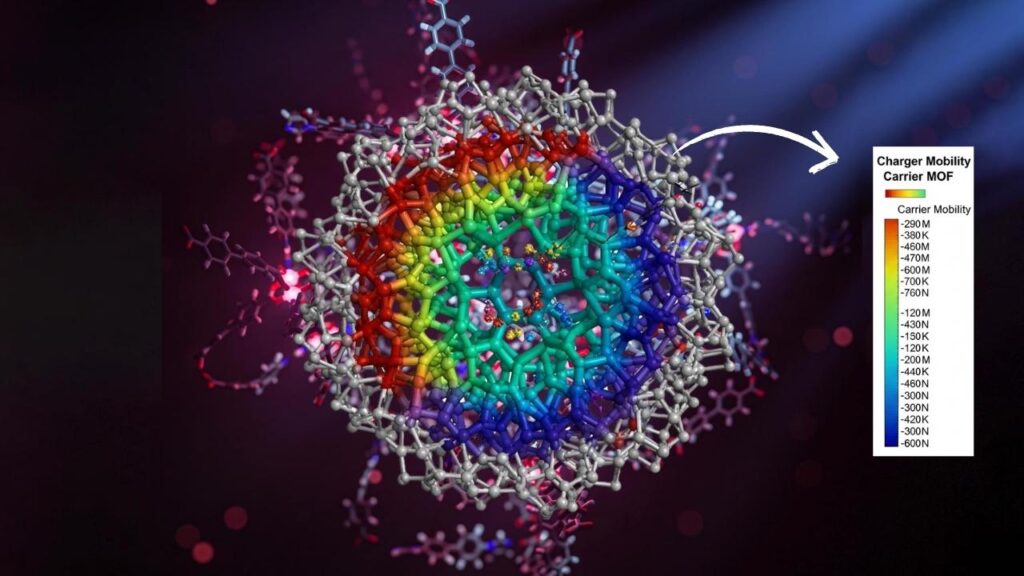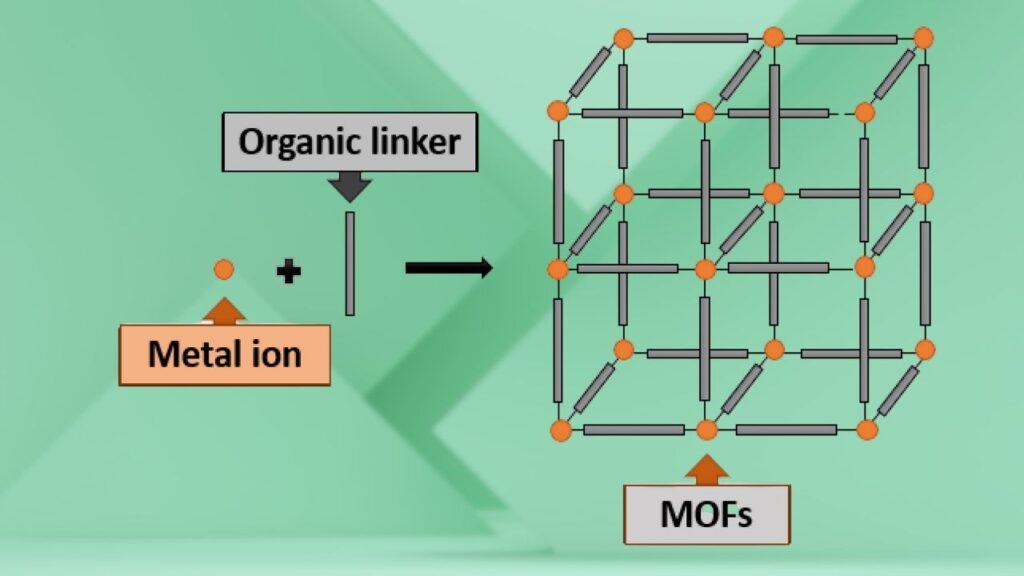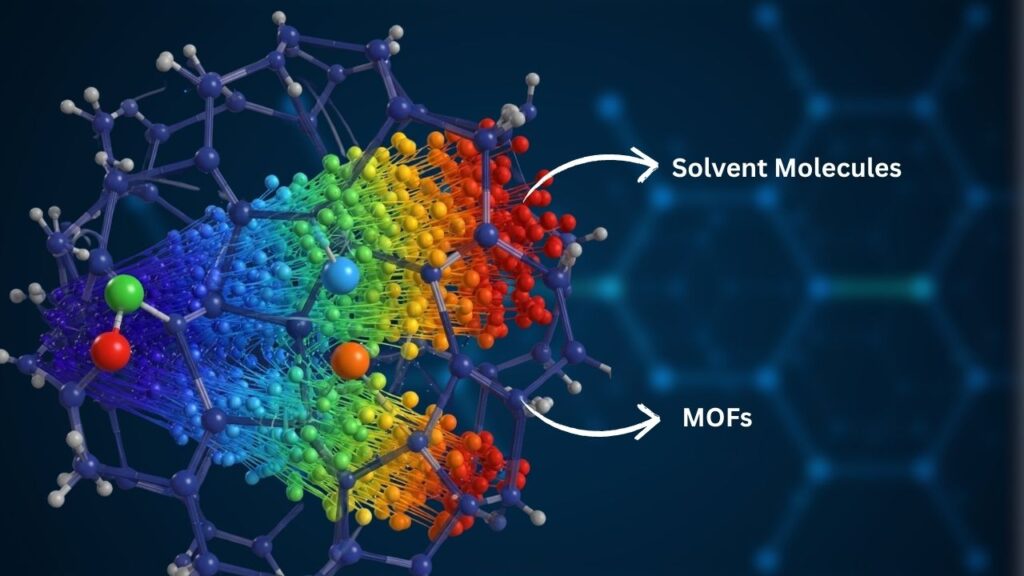Carrier Mobility in Metal-Organic Frameworks (MOFs): Metal–organic frameworks (MOFs) are revolutionizing the world of materials science, especially in fields like gas storage, catalysis, and electronics. But did you know that optimized solvents can significantly improve carrier mobility in MOFs? This breakthrough is opening new doors for faster, more efficient electronic devices and energy solutions.

In this article, we’ll explore what MOFs are, why carrier mobility matters, and how the right choice of solvent can make all the difference. Whether you’re a curious student, a budding scientist, or a seasoned professional, you’ll find practical advice, clear explanations, and actionable insights to help you understand and leverage this exciting development.
Carrier Mobility in Metal-Organic Frameworks (MOFs)
| Key Point | Details |
|---|---|
| What are MOFs? | Highly porous materials made from metal ions and organic linkers, forming 1D, 2D, or 3D structures. |
| Carrier Mobility | A measure of how easily charge carriers (electrons or holes) move through a material. Critical for electronics and optoelectronics. |
| Role of Solvents | Solvents influence the arrangement and dynamics of MOF components, impacting carrier mobility. |
| Recent Findings | Targeted network design and solvent optimization can massively boost charge transport in MOFs. |
| Professional Impact | Improved MOFs could lead to better sensors, batteries, and flexible electronics. |
| Official Resource | MOF Research at Berkeley |
Optimized solvents significantly improve carrier mobility in metal–organic frameworks (MOFs), paving the way for faster, more efficient electronic devices and energy solutions. By understanding the interplay between solvents, structure, and charge transport, both researchers and industry professionals can unlock the full potential of MOFs. The next big breakthrough could be as simple as choosing the right liquid!
What Are Metal–Organic Frameworks (MOFs)?

Metal–organic frameworks (MOFs) are like molecular LEGO sets. Imagine tiny building blocks made of metal ions (like zinc or copper) connected by organic “linkers.” When these pieces snap together, they form a super-porous structure with lots of empty spaces. These spaces, or pores, can trap gases, hold drugs, or even conduct electricity.
MOFs are unique because:
- They can be designed in one, two, or three dimensions.
- Their pores can be filled or emptied without breaking the structure.
- They’re used for everything from cleaning water to storing hydrogen for green energy.
Why Is Carrier Mobility Important in MOFs?
Carrier mobility is a fancy term for how quickly and easily electric charges (like electrons or “holes”) can move through a material. Think of it as how fast cars can travel down a highway. The higher the mobility, the faster and more efficiently devices like solar cells, sensors, and batteries can work.
In MOFs, carrier mobility is especially interesting because:
- Their structure can be tailored for specific tasks.
- They have the potential for high mobility due to their design flexibility.
- However, real-world MOFs often have lower mobility than expected, mainly due to something called dynamic disorder—tiny vibrations and movements in the structure that make it harder for charges to move smoothly.
How Do Solvents Affect Carrier Mobility in MOFs?
Here’s where things get exciting. Solvents—the liquids used to make or process MOFs—aren’t just bystanders. They play a critical role in shaping the final structure and performance of MOFs.

The Science Behind It
- When MOFs are synthesized or processed, solvents interact with the metal ions and organic linkers.
- The type of solvent (its polarity, size, and ability to form bonds) affects how these building blocks arrange themselves.
- Solvents can either help create a more ordered, stable structure or introduce more disorder (which reduces carrier mobility).
Real-World Example
A recent study found that by carefully choosing and optimizing solvents, researchers could:
- Increase the distance between certain stacked molecules (like pentacene) in the MOF, which surprisingly improved electronic coupling and boosted carrier mobility.
- Reduce the amount of dynamic disorder, making it easier for charges to move through the material.
This means that something as simple as picking the right solvent can turn a sluggish MOF into a high-speed conductor!
Step-by-Step Guide: How to Optimize Solvents for Better Carrier Mobility
1. Understand Your MOF’s Structure
- Identify the metal ions and organic linkers in your MOF.
- Know whether your MOF is 1D, 2D, or 3D, as this affects how charges move.
2. Choose the Right Solvent
- Consider solvent polarity. Highly polar solvents can stabilize certain arrangements, while less polar ones might favor others.
- Look at solvent size and ability to form hydrogen bonds or coordinate with metals.
3. Experiment with Solvent Mixtures
- Sometimes, a mix of solvents gives the best results. Try different ratios to see which produces the most ordered, stable MOF structure.
4. Monitor the Synthesis Process
- Use techniques like X-ray diffraction or spectroscopy to check how the MOF is forming.
- Adjust solvent conditions as needed to minimize dynamic disorder.
5. Test Carrier Mobility
- Measure how easily charges move through your MOF using techniques like time-of-flight (TOF) or field-effect transistor (FET) measurements.
- Compare results with different solvent conditions to find the optimal setup.
Practical Advice for Professionals
For researchers and engineers:
- Don’t overlook the solvent! It’s as important as the MOF’s building blocks.
- Use computational tools and simulations to predict how different solvents will affect your MOF’s structure and carrier mobility.
- Collaborate with chemists and materials scientists to fine-tune solvent choices for your specific application.
For industry leaders:
- Investing in solvent optimization can lead to breakthroughs in product performance, especially in electronics and energy storage.
- Stay updated on the latest research—MOF technology is evolving rapidly, and small tweaks can yield big results.
Photonic Processor Could Help Power the Next Generation of 6G Wireless
Zinciodine Battery Offers a New Alternative to Lithium-Ion Technology
Researchers Develop Better Method for Training AI to Handle Complex Tasks
FAQs About Carrier Mobility in Metal-Organic Frameworks (MOFs)
What are MOFs used for?
MOFs are used in gas storage, water purification, catalysis, drug delivery, and increasingly in electronics and sensors.
Why is carrier mobility important?
High carrier mobility means faster, more efficient movement of electric charges, which is crucial for better-performing electronic devices.
How do solvents affect MOFs?
Solvents determine how MOFs assemble at the molecular level, impacting their structure, stability, and how easily charges can move through them.
Can any solvent be used for MOF synthesis?
No. The choice of solvent depends on the specific MOF and desired properties. Some solvents promote better order and higher carrier mobility than others.






